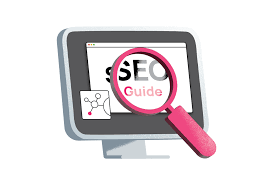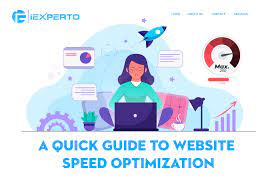Search engine optimization (SEO), search engine advertising (SEA), and search engine marketing (SEM) are essential strategies for businesses looking to improve their online visibility and attract more customers.
SEO (Search Engine Optimization)
SEO is the process of optimizing a website to improve its ranking in search engine results pages (SERPs). By using relevant keywords, creating high-quality content, and building backlinks, businesses can increase their organic traffic and reach a wider audience. SEO helps websites appear higher in search results, making it more likely for users to click on their links.
SEA (Search Engine Advertising)
SEA involves paid advertising on search engines such as Google or Bing. Businesses bid on keywords related to their products or services to have their ads displayed at the top of search results. This form of online advertising allows companies to target specific audiences based on demographics, interests, and online behavior. SEA can be a cost-effective way to drive targeted traffic to a website and increase conversions.
SEM (Search Engine Marketing)
SEM encompasses both SEO and SEA strategies to improve a website’s visibility in search engines. By combining organic optimization techniques with paid advertising campaigns, businesses can maximize their online presence and attract more potential customers. SEM allows companies to achieve immediate results through paid ads while also investing in long-term SEO efforts for sustainable growth.
In conclusion, SEO, SEA, and SEM are powerful tools that businesses can leverage to enhance their online presence, drive traffic to their websites, and ultimately increase sales and revenue. By understanding and implementing these strategies effectively, companies can stay ahead of the competition in the digital landscape.
9 Essential Tips for Mastering SEO, SEA, and SEM Strategies
- SEO (Search Engine Optimization)
- Research relevant keywords for your content.
- Optimize meta tags, titles, and descriptions on your website.
- Improve website loading speed for better user experience.
- SEA (Search Engine Advertising)
- Set clear goals for your advertising campaigns.
- Use targeted keywords and ad copy to reach the right audience.
- SEM (Search Engine Marketing)
- Combine SEO and SEA strategies for a comprehensive approach.
SEO (Search Engine Optimization)
Search Engine Optimization (SEO) is a fundamental aspect of digital marketing that focuses on optimizing a website’s content, structure, and back-end elements to improve its visibility in search engine results. By strategically incorporating relevant keywords, creating high-quality content, and building authoritative backlinks, businesses can enhance their organic traffic and attract more potential customers. SEO plays a crucial role in helping websites rank higher in search engine results pages (SERPs), ultimately increasing their online presence and driving targeted traffic to their site.
Research relevant keywords for your content.
Researching relevant keywords for your content is a crucial step in optimizing your SEO, SEA, and SEM strategies. By identifying and incorporating high-traffic keywords that are relevant to your business or industry, you can improve your website’s visibility in search engine results and attract more targeted traffic. Effective keyword research helps you understand what terms your potential customers are searching for and allows you to tailor your content to meet their needs. By integrating these keywords strategically into your website content, ads, and marketing campaigns, you can enhance your online presence and increase the likelihood of reaching your target audience.
Optimize meta tags, titles, and descriptions on your website.
Optimizing meta tags, titles, and descriptions on your website is a crucial step in improving your SEO, SEA, and SEM efforts. These elements provide search engines with valuable information about your content, making it easier for them to understand and index your pages accurately. By incorporating relevant keywords and compelling descriptions into your meta tags and titles, you can increase the visibility of your website in search results and attract more organic traffic. Additionally, well-crafted meta descriptions can entice users to click on your links, leading to higher click-through rates and improved search engine rankings. Overall, paying attention to these details can significantly enhance the effectiveness of your online marketing strategies.
Improve website loading speed for better user experience.
Improving website loading speed is a crucial tip in SEO, SEA, and SEM strategies as it directly impacts user experience. A fast-loading website not only enhances user satisfaction but also reduces bounce rates and increases engagement. Search engines like Google prioritize websites that load quickly, leading to higher rankings in search results. By optimizing website speed through techniques such as image compression, minifying code, and leveraging browser caching, businesses can provide a seamless browsing experience for visitors and improve their overall online visibility and performance.
SEA (Search Engine Advertising)
Search Engine Advertising (SEA) is a paid marketing strategy that allows businesses to promote their products or services through targeted ads on search engine results pages. By bidding on specific keywords related to their offerings, companies can increase their visibility to potential customers who are actively searching for relevant information. SEA provides a cost-effective way to reach a highly targeted audience and drive traffic to a website, ultimately leading to increased brand awareness and conversions.
Set clear goals for your advertising campaigns.
Setting clear goals for your advertising campaigns is crucial in maximizing the effectiveness of your SEO, SEA, and SEM strategies. By defining specific objectives such as increasing website traffic, generating leads, or boosting sales, you can tailor your campaigns to target the right audience and measure their success accurately. Clear goals provide direction and focus for your advertising efforts, helping you make informed decisions on budget allocation, keyword selection, and performance tracking. With well-defined goals in place, you can optimize your advertising campaigns to achieve tangible results and drive meaningful outcomes for your business.
Use targeted keywords and ad copy to reach the right audience.
To effectively utilize SEO, SEA, and SEM strategies, it is crucial to use targeted keywords and ad copy to reach the right audience. By conducting thorough keyword research and incorporating relevant keywords into website content and ad campaigns, businesses can attract users who are actively searching for their products or services. Crafting compelling ad copy that resonates with the target audience’s needs and preferences can significantly increase click-through rates and conversions. This strategic approach ensures that businesses not only drive traffic to their websites but also engage with potential customers who are more likely to convert into loyal clients.
SEM (Search Engine Marketing)
Search Engine Marketing (SEM) is a comprehensive strategy that combines both organic Search Engine Optimization (SEO) techniques and paid Search Engine Advertising (SEA) campaigns to maximize a website’s visibility and reach on search engine results pages. SEM allows businesses to target specific keywords, demographics, and user behaviors to drive targeted traffic to their websites. By integrating both SEO and SEA tactics, SEM provides a holistic approach to online marketing, offering immediate results through paid ads while also investing in long-term organic growth strategies. With SEM, businesses can effectively increase their online presence, attract more potential customers, and achieve higher conversion rates.
Combine SEO and SEA strategies for a comprehensive approach.
By combining SEO and SEA strategies, businesses can take a comprehensive approach to improving their online visibility and attracting more targeted traffic. SEO efforts focus on optimizing website content and structure to rank higher in organic search results, while SEA involves paid advertising to target specific audiences. Integrating these strategies allows companies to benefit from both immediate results through paid ads and long-term growth through organic optimization. By leveraging the strengths of both SEO and SEA, businesses can maximize their online presence and achieve better results in search engine marketing (SEM).



